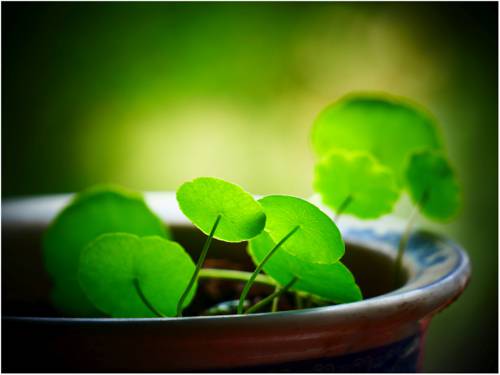
FAQ About Indoor Plant Leaf Nutrient Absorption Efficiency

What is leaf nutrient absorption in indoor plants?
Leaf nutrient absorption refers to the process by which indoor plants take up nutrients through their leaves. This method complements root absorption, helping plants access additional nutrients directly from foliar feeds or environmental deposits.

Why is leaf nutrient absorption important for indoor plants?
Leaf nutrient absorption is important because it allows plants to quickly access nutrients, which is especially beneficial in conditions where root absorption might be limited or inefficient. It can help improve plant health, growth, and resilience to diseases and pests.

How can I enhance nutrient absorption in my indoor plant leaves?
To enhance nutrient absorption in indoor plant leaves, consider using foliar sprays with diluted liquid fertilizers. Ensure the spray covers the leaves uniformly and is applied during cooler parts of the day to prevent leaf burn. Regular cleaning of leaves also helps improve absorption by removing dust and debris.

Are there specific nutrients that are better absorbed by leaves than roots?
Certain nutrients, such as micronutrients like iron and zinc, are often better absorbed through leaves compared to roots. This is because they are more available in foliar formulations and can quickly correct deficiencies when sprayed directly onto the leaves.

Can all indoor plants effectively absorb nutrients through their leaves?
Not all indoor plants have the same efficiency in absorbing nutrients through their leaves. Some species are more adapted to foliar absorption due to their natural habitat conditions, while others may primarily rely on root uptake. It's important to research specific needs of your indoor plants.

What are foliar sprays, and how do they work?
Foliar sprays are solutions of water and nutrients that are applied directly to plant leaves. They work by allowing plants to absorb nutrients through stomata and other surface structures, providing a direct source of nourishment. This method is fast-acting and can supplement soil-based nutrition.

How often should I apply foliar sprays to indoor plants?
The frequency of foliar sprays depends on the nutrient requirements and the species of the plant. Generally, spraying every two to four weeks is effective. It is important to monitor plant response to adjustments in the frequency of application.

What time of day is best for applying foliar sprays to indoor plants?
The best time to apply foliar sprays is during the early morning or late afternoon. The cooler temperatures at these times reduce the risk of leaf burn and facilitate better absorption while the plant's stomata are open.

Is it possible for indoor plants to absorb nutrients through their leaves without aid?
While indoor plants can absorb some nutrients from environmental deposits on their leaves, such as dust or fine particles, the process is generally inefficient without additional help like foliar sprays. Regular application of foliar nutrients greatly enhances absorption capabilities.

What are the signs of effective nutrient absorption through leaves?
Signs of effective nutrient absorption include improved leaf coloration, increased vigor, and enhanced growth rates. Leaves may appear more vibrant and healthy soon after foliar feeding. Conversely, prolonged inefficiency in absorption can manifest as nutrient deficiencies visible in leaf discoloration or stunted growth.

What are common mistakes in enhancing leaf nutrient absorption?
Common mistakes include over-applying foliar sprays, using incorrect nutrient concentrations, and not considering plant-specific needs. Over-concentration can lead to leaf burn, while neglect can result in deficiencies. Additionally, applying sprays during peak sunlight can reduce efficacy and harm plant leaves.

Can I use household items to make homemade foliar sprays for indoor plants?
Yes, you can use certain household items like diluted milk, epsom salts, or very diluted vinegar as foliar sprays for indoor plants. However, it's crucial to ensure these mixtures are well-diluted to avoid harming your plants and tailored to address specific nutrient needs.

Are there any environmental factors that affect leaf nutrient absorption?
Yes, environmental factors such as humidity, light intensity, temperature, and air flow can affect leaf nutrient absorption. High humidity can facilitate stomata opening, enhancing absorption, while extreme temperatures or harsh light can impede nutrient uptake.

What is the role of stomata in leaf nutrient absorption?
The stomata are small openings on the leaf surface that play a crucial role in leaf nutrient absorption. They regulate gas exchange and play a role in the uptake of dissolved nutrients in foliar sprays. The status of stomata can significantly impact how effectively a leaf can absorb nutrients.

How does leaf surface area affect nutrient absorption efficiency?
Larger leaf surface areas typically enhance the potential for nutrient absorption, as more area is available for the application of nutrients. This means plants with larger leaves can usually benefit more from foliar feeding than those with smaller leaves.

Can nutrient absorption through leaves help correct soil nutrient imbalances?
While leaf nutrient absorption can supplement certain deficiencies, it cannot wholly correct soil nutrient imbalances. It's a useful method for providing a rapid nutrient boost, but balanced soil fertility remains important for long-term plant health.

Should I rinse plant leaves after applying a foliar spray?
Rinsing plant leaves after applying a foliar spray is generally unnecessary and may remove the nutrients before they are absorbed. However, if there's a residue buildup or if an overly concentrated solution was applied, gently washing the leaves might be beneficial.

How can I tell if a plant is not efficiently absorbing nutrients through its leaves?
Indicators of inefficient leaf nutrient absorption include persistent nutrient deficiency symptoms such as chlorosis (yellowing of leaves), stunted growth, and continued poor plant health despite foliar feeding. It may necessitate reviewing your nutrient formulations and application practices.

Can leaf nutrient absorption replace traditional fertilizing methods?
Leaf nutrient absorption should not replace traditional soil fertilization methods but can complement them. It's particularly effective for quick fixes and addressing specific deficiencies but is not a comprehensive solution for plant nutrition needs.

Are there any specific products recommended for enhancing leaf nutrient absorption?
There are several commercially available foliar feeding products that enhance leaf nutrient absorption, such as those containing chelated nutrients or specifically formulated for particular plant types. It's important to choose products based on your plant's specific requirements for best results.
